I just realized after a short sabbatical that we have a large assortment of "MOODS" to chose from. Quite large. By the time I was finished reading them, I went from "Cheerful" to "Stressed". Hm.
Now for a little bit of verse, to smooth the way:
Neglectful of this page
Has been my absent pitious state,
So I will post anew,
not better for it's being late!

Kindly ignore my absense. Now let's talk about this planet. Haven't you wondered since childhood why earth looks so incredible unusual, so different, from the other planets?
LIFE! ADBUNDANT AND DIVERSE!
A theory existed long ago that earth's atmosphere was formed in order to accomodate life. That was the thinking of times when microscopes didn't exist and most people believed this planet was always so perfect for animals, especially the human one; that we always has this atmosphere. Naturally, we know different.

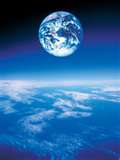
Earth has seen several mass extinctions in its 3.7 billion years time. We mostly think of the End Cretateous era, after the Jurassic age, an event of 65 million years ago, when the planet lost more than half its life. Only small mammals survived. But long before dinosaurs there were very severe mass extinctions, and the life that survived was what carried over into the next age to become the ancestors of continued life. Just for fun I think I'll list them, age before beauty:

We have the Ordovian extinction of 439 million years ago when the sea levels dropped when glaciers were formed, then rising sea levels as they melted. The toll was over 60% of marine life, gone extinct.
364 million years ago the Divonian event wiped out 22% of marine shell-life and 50% of marine flora. The exact cause is as yet unknown.
251 million years ago the Permian-Triassic event caused by an asteroid or comet which in turn caused volcanism on a tremendous scale. This catastrophe was earth's worst extinction, killing 95% of all species. The life that did survive carried on into the next age, most likely vertebrates, which had already developed. Insects of some long-dead species.
199 million years ago the End Triassic event caused by massive floods of lava erupting from the central Atlantic "magma" province, and triggered the opening of the Atlantic Ocean. Volcanism lead to deadly global warming, killing 74% of marine life.
65 million years ago the Cretaceous-Tertiary event caused by a mile-wide asteroid which created a crater that hides on the Yucatan Peninsula and beneath the Gulf of Mexico, easily seen from near-space. This one killed 67% of marine life and 18% of vertebrate life, including of course, the dinos.
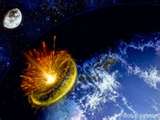

But again, this planet for all its changes, looks and acts so perfectly suited for life, though not always so. If we go back about 3 billion years, the planet had but one land mass, called Pangia, and the earth was covered in water. One giant ocean. During a fierce lightening storm, it is generally assumed, the electricity from a lightening bolt hit the waters in just such a way, totally random in its perfect order, and formed the very first cell. We know today that electricity is like a jump-starter for life, in many areas. Electromagnetic fields surround our bodies as well as our planet. So we now have a cell. A single-celled animal. It was called Cito-bacteria, and looked pretty much like you'd imagine it would - a microscopic little wiggly worm-shapped piece of LIFE!! It had a cell, which could divide, and had a nucleus which, of course, held its DNA. The blueprint of all life on this planet. It could divide and replicate itself, making alot of bacteria - a lot of life! There are only 3 types: Animal, vegetable and mineral. Humans are the highest animal on the food chain because of our brain.

So life came from the cosmos, from the stars, the heavens if you will, and its cradle was the water covering the planet. This bacterium went on to replicate andpropagate until we had multi-celled creatures of all kinds you'll recall from high school biology: paramecium, amoeba, etc. Life.
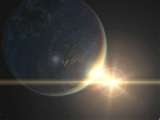
Backto the story, we're at a point where life has managed to find a tenuous yet stubborn foothold on planet earth. Now the good part: this bacteria absorbed its nutrients from the sea, expelling OXYGEN as a waste product into the air, helping to create the firstatmosphere. Oxygen leaving the ocean and ascending into the skies. Bacteria gave us the first gaseous substance we would need for further life to prosper. Which it did. Life on earth is what MADE earth look as it does. Life did not simply evolve to suit the planet, elsewise we'd have nothing but gaseous matter - like Jupiter or Saturn. It was here that life found its footing, and the planet evolved because of the life forms taking hold in it. The earth looks this way because of us. Because of LIFE.

And again, there's the down-side. It looks pretty bad right now and that's because of us, too. I've no doubt whatever that the millions of people working day and night to stave off the effects of the early ice age to come because of total gloal warming will find answers we desparately need if we're to survive as a successful species. Don't forget the mass extinctions. All those species which died out. This planet is a living organism and has the frightening ability to expel that which it doesn't need or which is causing it harm.
But even without global warming, earth is on a time-table of geological events which occur regularly and are certain to continue. Even though our closest star, "Sol", our sun, has an estimated continued life-span of another 500,000 million years, that's really not long, and all life will have long-since perished as the Sun starts to change, to age. The Universe is still expanding, which means it's getting larger. Objects held in space are still expanding from that initial explosion of 13 billion years ago, the estimated age of our known universe. It's not expanding from the earth, however, as earth is not the center of space. Astro-physicists believe that this universe has no center, no edges. Yet it's very clear everything in space is getting older and moving outward. From where is unknown, as we only know what we can see with our incredible eyes in space.

But as new galaxies form and "sun"-systems heat and cool, it's just too arrogant to think that life won't start somewhere else on another planet in another system in almost the same way it did here. Afterall, notice how even the farthest objects in space look so much like the closest? It tells us that at one time, all this mass was in the same place - before the great eruption of 13 billion years ago. The noise from that first cataclismic event, the "Big Bang", can still be heard today by radio-astronomers and amateurs alike, and I truly believe life is beginning its journey in another galaxy, in a similar star-system, as we head into the final stages of our own.

A very nice bit of interest: Titan, one of Jupiter's moons, presently has an atmosphere completely similar to that of earth's 3.7 billion years ago, when life first formed. It contains the basics for life, as we know it: carbon, methane, ammonia and watervapors. These all exist now on Titan, including liquid water, both surface and sub-surface, although it's far colder than earth was in its early stages. Still, makes many wonder if life isn't now taking hold on that orbiting satellite of Jupiter. Would make for some incredible discoveries ......

Some basics courtesy of Science Daily, University of Rochester, Gryphon.



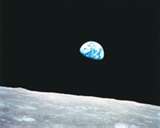































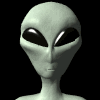




















5 comments:
Thanks for sharing. Makes perfect sense.
I just noticed the moods the other night and It is quite large...but I like choices.
There's so much that I can say about this entry. First off is the religious aspect. I remember trying to explain to my eldest that even though our Church talked about Adam and Eve, how could we believe in evolution. The kid was about 7 at the time. I had to ask. Sister Christine Marie explained it this way. The people who wrote the Bible were obviously ignorant in our knowledge of science. They had lore and magic, and used that to explain the beginning of the world. Makes sense to me. Even made sense to my 7 year old. Anyway, the Pope said something the other day that made sense, too. He expressed the belief that for us to believe we are the only life in the universe is pompous. I agree. If God made this world for us, why wouldn't he make a compatible worlds elsewhere? Needless to say I enjoyed this entry, particularly the part about paleo history. I've read a lot about what you wrote here, although, not so extensively. Good work.
Jude
http://journals.aol.com/jmorancoyle/MyWay
I am going to book mark this adn re-read it. Very informative
Marti
I did the same thing when I noticed the wide variety of moods, sat and contemplated and almost skipped listing one at all...
Welcome back my eloquently well spoken friend, with wisdom for the ages (winks)...I've always believed there had to be more than just us...it seems too well boxed and wrapped of a notion, that left little room to spectulate that we would be the only living beings...(Hugs)
On your question of how do I manage to keep my space so well organized and cleaned. The answer is 4 inside cats and a dog. I clean up after them enough not to want to add my own nuisance to it....Indigo
http://journals.aol.com/rdautumnsage/ravens-lament/
Post a Comment